Art History
What Was the Art Market Like During the Real Roaring ’20s? History Offers Some Lessons as We Enter Another Decade of Decadence
What to consider as the art market enters its roaring 2020s phase.
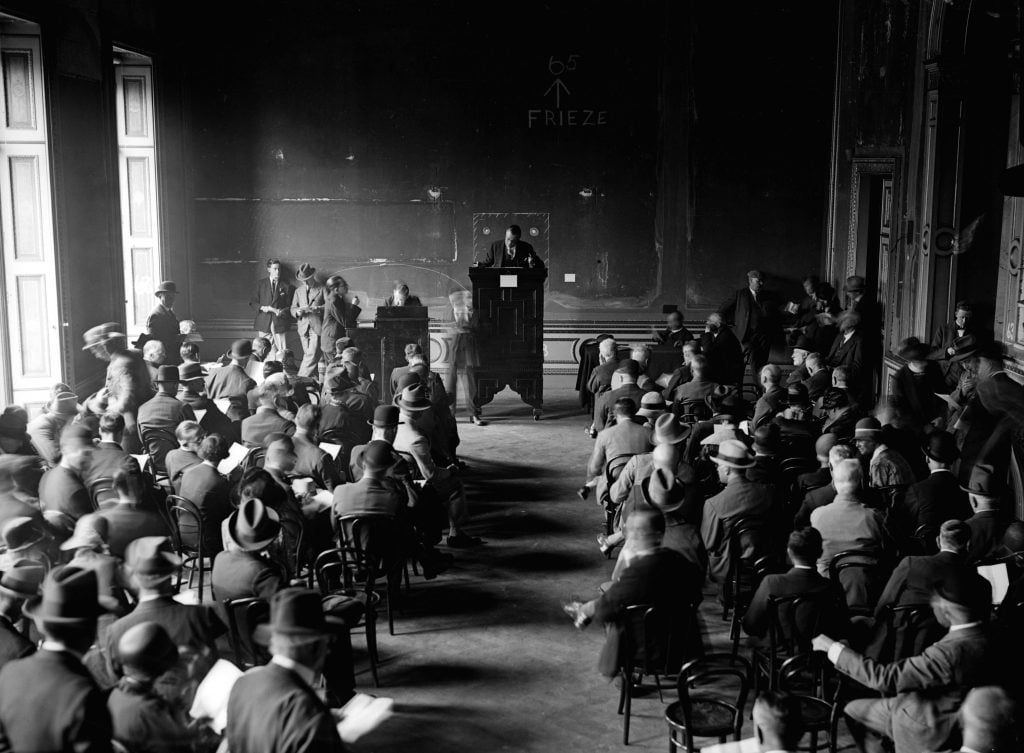
What to consider as the art market enters its roaring 2020s phase.

Darla Migan

Gertrude Stein held vibrant salons in Paris. Diego Rivera traveled from Mexico City to Moscow to paint murals. Jacob Lawrence and Romare Bearden, whose families had moved north as part of the Great Migration, fueled the vibrancy of the Harlem Renaissance in New York.
The 1920s was the moment when the “modern art world began to crystallize,” said Veronique Burke, the director of Christie’s Education. And so did the modern art market. Paris was the undeniable epicenter of the industry: Emerging buoyant at the beginning of the decade after a downturn in World War I, the city hosted record-setting auctions of the art-filled estate of New York City lawyer John Quinn as well as artist Edgar Degas’s personal collection.
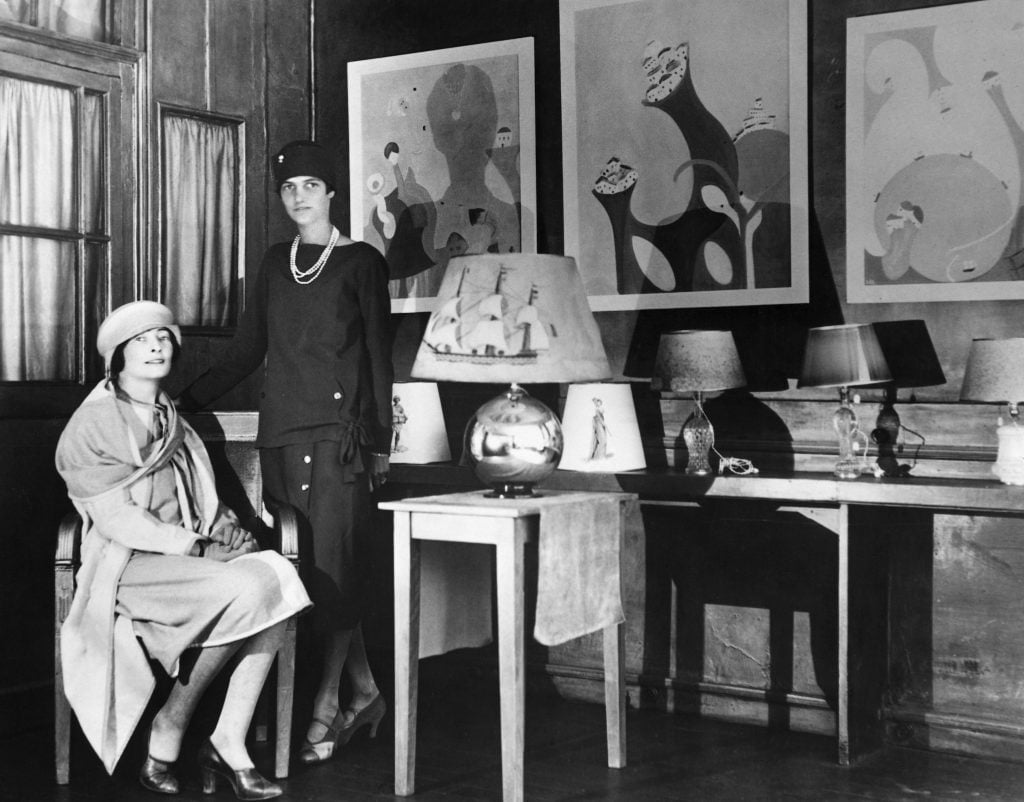
Peggy Guggenheim (standing) with the famous British artist Mina Loy in Paris. (Photo by George Rinhart/Corbis via Getty Images)
On the primary market, sales were typically brokered through powerful dealer-critics operating primarily between Paris, Berlin, and New York. Picasso and Matisse had contracts with the dealer and publisher Ambroise Vollard who, alongside the Rosenberg brothers, organized the first “blue-chip” galleries on the Right Bank.
“We have a similar set of players in Paris as we do today—artists, dealers, collectors, academics—only the power begins to shift between who leads the tastes of the market,” Burke explained. “In the 2020s, the curator may play the role that the dealer once played by having the trust of collectors. And only 10 years ago, the collector may even have played a more powerful role than the curator. Nonetheless, in the early 20th century, all of these players convene around the problem of promoting art that no longer fits the traditional canons of taste, and these players put themselves in place to promote new ideas about the role of art in culture.”
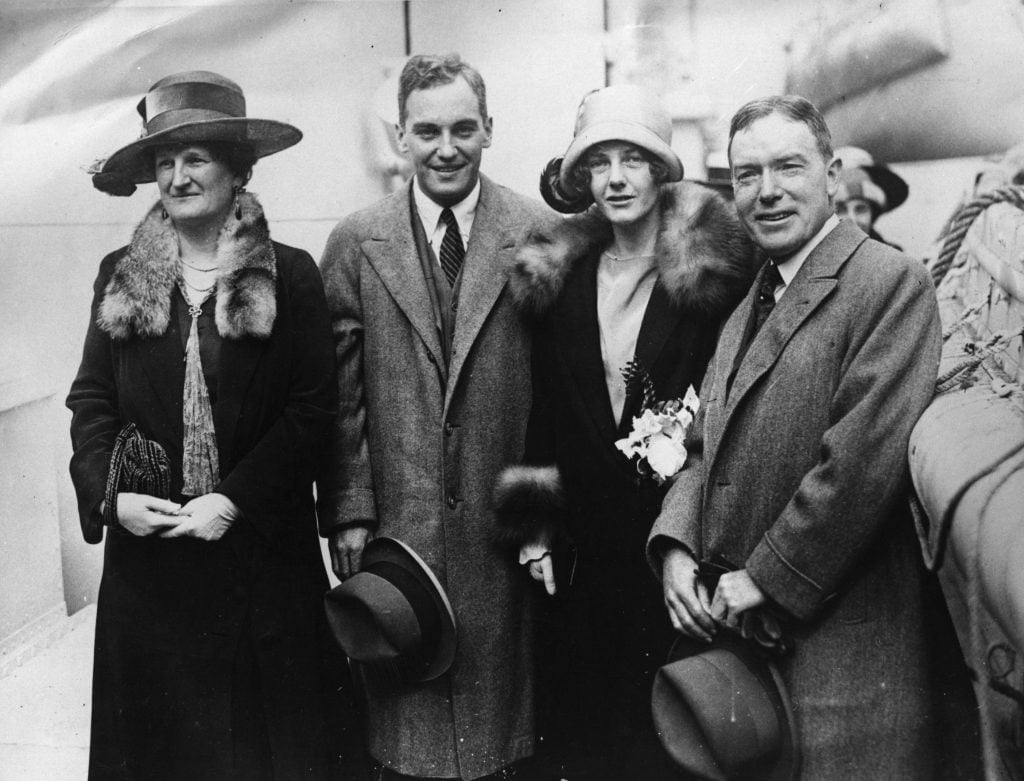
John D. Rockefeller together members of his family including Abby Rockefeller. (Photo by Hulton Archive/Getty Images)
The decade also marked the beginning of a major shift: the rise of the American collector. In the midst of Europe’s wars and revolutions, the American dollar was stronger than it had ever been before. In 1926, the franc currency crisis meant American collectors like the chemist and businessman Albert C. Barnes could purchase Modiglianis on the Right Bank by the truckload.
The 1926 sale, at Paris’s Hôtel Drouot, of American lawyer John Quinn’s impressive collection of avant-garde and Impressionist art marked the full entry of the American professional class onto the international collecting stage.
While design, fashion, and architecture flourished in the Art Deco movement of the United States, the European Dada and Surrealist movements were exploring the human toll of World War I and expressing disillusionment with preeminent European cultural forms. Quinn amassed the greatest collection of these artists’ works and advised in his will that upon his death, the art should be sold in Paris lest it be too early for Americans to appreciate it.
Overall, the 1920s offered a brief window of high-energy market activity between the end of WWI and the stock market crash of 1929. American collectors, many of whom had begun to concentrate great wealth during the Gilded Age of the 1880s (the same time European aristocrats were seeing their fortunes shrink), seized the moment.
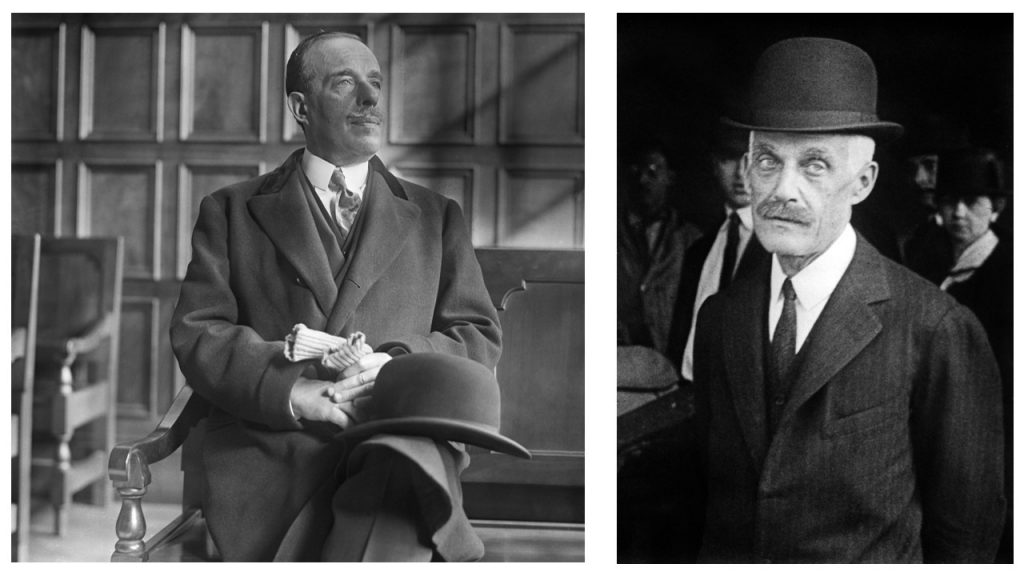
Left: Sir Joseph Duveen in 1929 and American financier Andrew William Mellon, ca. 1920. (Photo by APIC/Getty Images)
The late 19th century also gave birth to what some might call the beginning of the megadealer. Sir Joseph Duveen stands out as defining the activities of the modern art dealer by organizing the beginnings of what remain America’s most prestigious collections. His family firm sold a wide range of luxury objects, including steamships, furniture, tapestries, and Old Master paintings, to clients including William Randolph Hearst, Henry E. Huntington, Samuel H. Kress, Andrew Mellon, J. P. Morgan, John D. Rockefeller Sr., and J. Paul Getty.
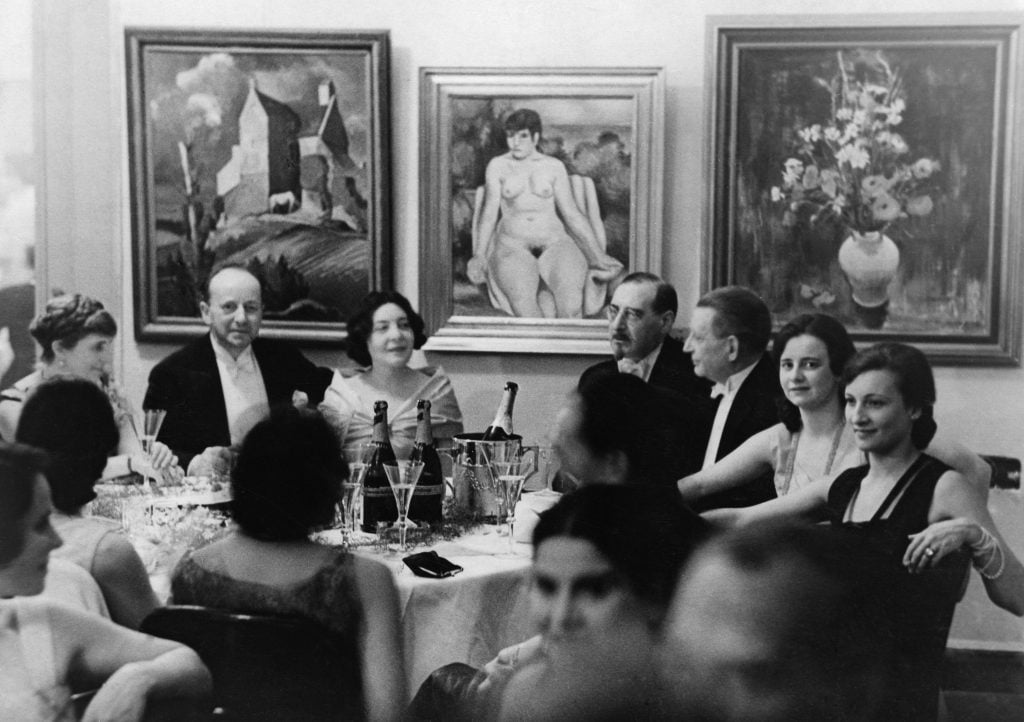
At the celebratory banquet Berliner secession: Writer Meier-Graefe, Ms. Hugo Simon, Painter Eugen Spiro, art collector Fritz Schoen, Ms. Meier-Graefe, Ms. Spiro. (ca. 1929) (Photo by bpk/Salomon/ullstein bild via Getty Images)
But scholars of the era say the evolution of taste also serves as a cautionary tale for the trend-hungry collectors of today. “Many famed collectors of the first decades of the 20th century were first captivated by contemporary art and later turned their attention to older art,” said Inge Reist, director of the Center for the History of Collecting at the Frick Collection in New York. (Ever heard of John Hoppner or Ludwig Knaus? They were huge at the turn of the century.)
“As collectors of the 21st century Gilded Age parallel their counterparts of a century ago,” Reist said, “they should note that the art market—like all markets—is cyclical and what’s in vogue today may not be so sought after tomorrow.”
A version of this article appeared in the fall 2021 Artnet Intelligence Report, available exclusively to Artnet News Pro members. To read more about the tech tools poised to revolutionize the art world, what the next generation of collectors is buying, and how much money NFTs are making for auction houses, download the full report here.